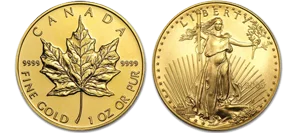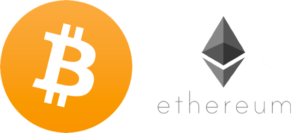Saudi, BRICS: Evidence of Global Dedollarization Has Never Been Stronger
Disclosure: We are reader-supported. If you purchase from a link on our site, we may earn a commission. Learn more
Last Updated on: 7th April 2023, 09:42 am
The American Institute for Economic Research just declared that “dedollarization has begun.” The post-Bretton Woods economic order, in which international trade is settled in fiat U.S. dollars, may be in the early stages of being upended as new trade alliances threaten the supremacy of the greenback.
Last week, a coalition of non-Euro-Atlantic states publicly announced that they would initiate new measures that will rewrite the global security architecture. The end result will see a broad group of states, called the Shanghai Cooperation Organization (SCO), led by China, trade with one another in Chinese yuan while enforcing mutual security.
The pact’s influence, however, extends beyond the coalition of SCO member states. For example, even France, which is not a party to the SCO, purchased 65,000 tons of Chinese light natural gas in yuan on March 31. This kind of transaction is unprecedented as, until now, hydrocarbons have been traded exclusively in dollars.
Here’s a quick recap of the latest dedollarization developments as of April 2023:
- Saudi Arabia joins the China-led SCO trade alliance
- BRICS bloc announces the creation of a new dollar-independent trade currency
- China sells 65,000 tons of natural gas to France, settled in Chinese yuan
- China’s central bank continues record-breaking gold buying spree
- Up to 400 tons of gold has been purchased by unnamed buyers since 2022
The international trade climate appears to be changing at a rapid pace.
How does this impact gold and silver investors, and the U.S. economy more generally? Let’s take a look at the international role of the U.S. dollar and how the post-war preeminence of the greenback may be undermined via new multilateral trade blocs in the years ahead.
Table of Contents
Background: BRICS, Sanctions, and Global Reserve Currencies
It’s long been debated whether BRICS (Brazil-Russia-India-China-South Africa) are capable, as a trading bloc, to bypass U.S. sanctions by settling trade with non-U.S. dollars.
In the immediate aftermath of the 2022 Russian invasion of Ukraine, the international community froze Moscow’s foreign reserve assets. This at least partially stymied Russia’s access to its own foreign currencies. In an attempt to avoid any such future scenario, it’s likely that Russia and its allies are taking precautionary steps to distance themselves from seizable dollar-denominated reserves.
In essence, dedollarization allows rogue states to sidestep economic sanctions—something which nefarious state actors can weaponize to achieve illicit geopolitical aims.
Since the early 1970s, the world’s reserve currency, the U.S. dollar, became un-linked with the price of gold under the Nixon Administration in order to accommodate increasing gold demand. This, in turn, created a high global demand for U.S. dollars and U.S. Treasury securities.
The U.S. dollar remains the world’s reserve currency today. The International Monetary Fund (IMF) estimates that 59% of global central bank reserves are held in U.S. dollars. From 1999 until 2019, the U.S. dollar settled 96% of all international trade within the Americas and 79% of trade in the rest of the world.
(Source: Gold.org)
However, dollar-denominated assets held in U.S. accounts are confiscable by authorities. The threat of confiscation, in large part, motivates certain regimes to design anti-dollar policies in order to circumvent sanctions and reduce their state’s exposure to economic penalties. Although typically the domain of authoritarian regimes, certain democratic states, including members of the BRICS alliance, is also pursuing an anti-dollar reserve currency.
New Developments: 2022-2023
While dedollarization policies have been considered for decades, state actors such as China and Russia have reportedly been taking drastic steps to reduce or eliminate their reliance on the U.S. dollar since March of last year.
Notably, central banks have been purchasing gold at unprecedentedly high rates. For instance, the People’s Bank of China quietly purchased a record 400 tons of the yellow metal in Q3 2022. The true extent of China’s gold reserves is still a matter of debate, however, with some speculating that China (a gold mining giant) now holds over 14,000 tons in reserves.
Beginning this year, we’ve only seen central bank gold buying ramp up. For instance, Q1 2023 outpaced even last year’s record-breaking year for central bank gold purchasing.
(Source: S&P Global Market Intelligence)
While rampant gold buying is not evidence of dedollarization in and of itself, it does reduce the importer's structural reliance on U.S. dollars to satisfy international trade commitments.
Saudi Arabia Gets on Board With SCO
One interesting recent development includes Saudi Arabia’s inclusion in the SCO, which signifies Riyadh’s interest in facilitating trade outside of U.S. monetary control. This will likely strengthen Beijing and Riyadh’s growing strategic partnership, which currently sees over $87 billion in bilateral trade volume per year.
The ambitious Saudi-Chinese partnership was announced on March 29, 2023, and looks to further entrench Beijing as Riyadh’s largest trading partner.
Common BRICS Currency
In late March, a Russian State Duma official remarked that the BRICS coalition was “in the process of creating a new medium for payments […] that does not defend the dollar or euro.” Several days later, the new reserve currency was officially announced to the public. It is unclear at this point whether the currency will be digital or physical, or whether it will be backed by gold.
France-China Yuan Settlements
Historically, Chinese natural gas sales to European states have been transacted in U.S. dollars or euros. This precedent, however, was disrupted on March 28 when France’s TotalEnergies purchased 65,000 tons of light natural gas from a Chinese state oil company (China National Offshore Oil Company) imported from the United Arab Emirates and settled entirely in yuan.
Details of the transaction are scant, and it remains to be seen whether future LNG sales will be settled in yuan or U.S. dollars. However, one thing remains clear: the U.S. dollar’s monopoly on cross-border international payments is beginning to unravel.
People’s Bank of China (PBOC) Publishes Gold Purchases
The PBOC has resumed publishing official records of their gold-buying campaign. In November and December 2022, the PBOC declared that they added 32 and 30 tons of gold, respectively, on top of their usual monthly gold acquisitions.
According to a Capital report, roughly 400 tons of gold has been purchased by unnamed buyers since Q3 2022—driving speculation that more gold is being hoarded by central banks off the books.
Dedollarize Your Portfolio
Central banks all over the world are diversifying their reserves to reduce their dependence on the U.S. dollar and dollar-denominated assets.
If you want to follow suit, the good news is that you can do so within a tax-advantaged investment vehicle. A self-directed IRA (SDIRA) allows you to purchase gold, silver, and other alternative assets that are otherwise inaccessible to ordinary retail investors.
Talk to your financial advisor about opening an SDIRA with one of America’s top-ranked gold IRA providers, and start your dedollarization journey today.



 Silver
Silver Gold
Gold Platinum
Platinum Palladium
Palladium Bitcoin
Bitcoin Ethereum
Ethereum

 Gold: $3,328.02
Gold: $3,328.02
 Silver: $37.77
Silver: $37.77
 Platinum: $1,404.65
Platinum: $1,404.65
 Palladium: $1,226.98
Palladium: $1,226.98
 Bitcoin: $117,368.41
Bitcoin: $117,368.41
 Ethereum: $3,090.52
Ethereum: $3,090.52